Posts Tagged book review
book review: In the Margins
Posted by Amy Steele in Books on March 20, 2022
In the Margins: On the Pleasures of Reading and Writing by Elena Ferrante
Europa Editions | $20.00 | Hardback | 9781609457372 | 176 pages | March 15, 2022
If you are a fan of Elena Ferrante, this is the book for you. If you’re wondering about the Ferrante hype, this is also the book for you. In the Margins originated as a series of lectures Ferrante gave at the University of Bologna. She discusses her work as a writer, including her technique, her influences and her struggles. Writers will be inspired by these essays. Writing is hard work, it can be frustrating but it’s worth the struggles in the end. Writing has an inherent power to connect, to educate, to comfort. You’ll want to spend time absorbing these essays.
I might be the only reader who hasn’t yet read all of the “Neapolitan novels.” I liked My Brilliant Friend but wasn’t blown away at the time. I do want to circle back to the others. I have become a fan through her other works. I quite liked The Lost Daughter. It’s a dark, honest and thoughtful novel about the challenges of being a mother. In anticipation of this essay collection, I recently read Incidental Inventions, essays Elena Ferrante wrote as a columnist for The Guardian. The topics covered include feminism, friendship, motherhood, writing, insomnia, addictions, nationalism, death and the recent film adaptation of The Lost Daughter—“I’m attached to that book in a particular way. I know that, with it, I ventured into dangerous waters without a life preserver.”
Like many successful writers, Ferrante is an avid reader and she started writing at a young age. She amasses journals filled with her stories and thoughts. Discussing her youth, she said: “I read a lot, but what I liked was almost never written by women. It seemed to me that the voice of men came from the pages and that voice preoccupied me, I tried in every way to imitate it.” She discusses the writing of Emily Dickinson, Virginia Woolf, Gertrude Stein and Dante, among others.
In her writing, Ferrante doesn’t hesitate to show the underbelly of humanity, the darkness. That makes her writing so strong and appealing. She explains: “Anyone who has literary ambitions knows that the motivations, both great and small, that impel the hand to write come from “real life”: the yearning to describe the pain of love, the pain of living, the anguish of death; the need to straighten the world that is all crooked; the search for a new morality that will reshape us; the urgency to give voice to the humble, to strip away power and its atrocities; the need to prophesy disasters but also to design happy worlds to come from there.” She said: “Beautiful writing becomes beautiful when it loses its harmony and has the desperate power of the ugly. And characters? I feel they are false when they exhibit clear coherence and I become passionate about them and do the opposite.”
Thank you to Europa for sending a copy.
book review: Band of Sisters
Posted by Amy Steele in Books on March 2, 2021
 Band of Sisters by Lauren Willig. William Morrow| March 2, 2021| 519 pages | $27.99| ISBN: 9780062986153
Band of Sisters by Lauren Willig. William Morrow| March 2, 2021| 519 pages | $27.99| ISBN: 9780062986153
RATING: 4/5*
Based on actual events during WWI, a group of Smith College alumnae formed the Smith College Relief Unit and traveled to northern France to assist in civilian relief work in 1917. They traveled around delivering supplies, providing medical aid and educating school children in decimated villages. Since she can speak French and drive, Kate Moran, a scholarship student, gets recruited by her friend Emmie Van Alden. Kate leaves her job as a teacher and joins 17 other Smith women, including two doctors.
“Debutante nonsense, her mother called it. Good enough for those who didn’t have to worry about getting their living.
But this was work too. She might not be paid for it, not exactly, but the Unit was covering her room and board, and how else was she ever to see France, even France at war?”
Emmie Van Alden comes from a wealthy family and doesn’t need to earn a living. The unit’s mostly composed of privileged women. They could’ve stayed safe in the United States but they chose to help with war efforts and that’s to be commended. The unit leader, Mrs. Rutherford, provides some statistics: “In the little over a week that we’ve been here, Miss Van Alden alone has already made fifty-one calls on forty-two families.” She also noted that the medical department had seen nearly three hundred patients.
Throughout the novel, Kate struggles with confidence, belonging and feeling like an outsider. She even overhears another woman commenting that she didn’t know that there were any Catholics at Smith. However, she’s extremely focused and efficient and even becomes the assistant director of the unit for a while. However, when Kate finds out that Emmie’s family is paying her room and board, it draws another rift in their tenuous relationship. Later she finds out that Emmie’s cousin, Julia, one of the doctors on the excursion, comes from a poor family as well. To Emmie’s dismay, Julia and Kate become close, making Emmie feel like the odd one out. There’s a lot going on in this novel.
“She’d thought they’d been happy at Smith. It had seemed to work then. Emmie provided all the affection and Kate provided the practical skills, and between them, they balanced out rather nicely.”
The unit faces more challenges than anticipated once they reach their post in Grecourt. There’s constant shelling from the Germans, threats to be ousted by the British army and French bureaucracy. Villagers suffer from pneumonia, measles, tetanus, syphilis. One night, Kate and Emmie run out of gas and get lost in a snowstorm and are nearly sexually assaulted by some soldiers. The women in the unit prevail despite undermining, mistreatment and discouragement by men. There’s some romance mixed in, too. There aren’t that many women around France at this time and men come for dinner parties every week. Emmie flirts and falls in love with British Captain Will DeWitt (of the DeWitt biscuits!). He tells her that he’ll propose to her after the war ends.
I’d not heard of the Smith College Relief Unit before discovering this book. I’m a women’s college graduate (Simmons College ‘91) so this particularly appealed to me. Author Lauren Willig completed meticulous research straight from the source at Smith College Special Collections. She pored over letters, journals, reports and photos. There are still so many stories one can cull from historical documents. It’s fascinating. I’ve not read a lot of books based in WWI so I appreciated that as well. This is why I love to read historical fiction. I learn about events I didn’t know that much about and am transported to different times and historical moments in a creative, accesible and memorable manner. While the book dragged a little bit at times and might have been too long, I overall enjoyed reading about these brave, determined women. They must have been forever bonded by their remarkable experience during WWI.
Band of Sisters is the perfect novel to read during Women’s History Month.
BEST BOOKS OF 2020
Posted by Amy Steele in Books on January 4, 2021
I read 87 books this year– 84 by women; three by men; 32 by BIPOC authors. The shortest book I read was Intimations by Zadie Smith. The longest book I read was Goldfinch by Donna Tartt. Here are the best books (5/5*) that were published in 2020 that I read.
Intimations by Zadie Smith
Penguin Books, July 2020. 97 pg.
A slim collection of essays–about aging, community, race, COVID 19, writing– that Zadie Smith wrote during the pandemic. There’s much to consider within these pages of thoughtful, personal and universal essays. She explains: “Talking to yourself can be useful. And writing means being overheard.”
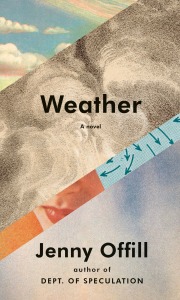 Weather by Jenny Offill
Weather by Jenny Offill
Knopf, February 2020. 207 pg.
fantastic, creative and timely novel addressing the current climate crisis and the impending apocalypse. it’s from the point-of-view of a middle-aged woman –so definitely relatable to me (I want to read more novels about older women). She’s married and has a son. Her brother is a recovering drug addict and she’s had to care for him throughout the years. Jenny Offill excels at this observational narrative. It’s short, riveting, potent. It’s really the perfect thing to read during this COVID-19 pandemic and quarantine we’re all experiencing. Plus it’s quite relatable to middle-aged spinster GenX me: “The woman has just turned fifty. She tells me about her blurriness, the way she is hardly seen. She supposes she is not so pretty anymore–fattish, hair a bit gray. What she has noticed, what gives her a little chill, she tells me, is how if she meets a man out of the context of work, he finds her to not be worth much. He looks over her shoulder as he talks or pawns her off on a woman her own age.”
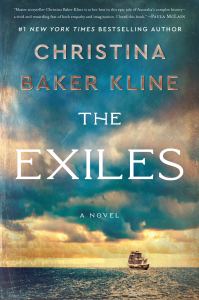 The Exiles by Christina Baker Kline
The Exiles by Christina Baker Kline
Custom House, August 2020. 370 pg.
I loved this amazing work of historical fiction so much and don’t know why I waited so long to write about it! It covers an intriguing aspect of history that I’ve not read much about. Based on actual events, the novel focuses on a ship of female convicts traveling from England to Van Diemen’s Land (Tasmania) in the 1850s. Although Aboriginal people have occupied Australia for thousands of years, the British government views the native people as nuisances and the land to be uninhabited and available for their use. It’s amazing to think about some of the low level crimes for which many were sentenced as well as the harrowing passage. “Evangeline recalled seeing small items in the newspaper over the years about the incorrigibles– men, she thought– transported on convict ships to Australia. Murderers and other deviants exiled to the far side of the earth, ridding the British Isles of the worst of its criminals.” Evangeline is a governess accused of stealing a ring which had been given to her by the family’s older son with whom she’d become romantically involved. She’s well-educated and her late father was a minister. The other staff members didn’t like her. “She was, by temperament, much like her father: diffident, with a shyness often mistaken for aloofness, a bookishness perceived as snobbery.” She’s sentenced to 14 years in prison. She’s pregnant and gives birth to a daughter onboard. Sadly she’s thrown overboard by a crew member who she’d stabbed to protect Hazel, who he’d been sexually assaulting. Hazel is a scrappy convict whose midwife mother taught her many potions and remedies. Mathinna is a native woman who knows how to read and learns to speak French. She’s taken from her tribe by Van Diemen’s governor’s wife on a whim. She considers her a project. It doesn’t work out well. The novel’s a complete page turner and I became so invested in these women I didn’t want it to end.
 Fresh Water for Flowers by Valerie Perrin
Fresh Water for Flowers by Valerie Perrin
Europa, June 2020. 476 pg.
“My closest neighbors don’t quake in their boots. They have no worries, don’t fall in love, don’t bite their nails, don’t believe in chance, make no promises, or noise, don’t have social security, don’t cry, don’t search for their keys, their glasses, the remote control, their children, happiness.”
I walk in cemeteries fairly often. There’s one in my neighborhood. When I was in grad school, I would drive to the Arlington National Cemetery to take walks through it. I liked the quiet and solitude. I sometimes wonder about the people whose names I see on gravestones. Violette Toussaint is a cemetery caretaker in the small French town Bourgogne. She lives on site. She takes notes on everyone who’s buried there. She’s close friends with three gravediggers, three groundskeepers and a priest. She feeds the stray cats that roam the cemetery. She reads. She bakes. It sounded fairly idyllic to me. I love the writing and this character. Violette is different, interesting, smart, thoughtful. I found myself deeply connected to her– “I don’t fit into boxes. I’ve never fit into boxes. When I do a test in a women’s magazine– “Get to know yourself,” or “Know yourself better”–there’s no clear result for me. I’m always a bit of everything.” I don’t fit in boxes either.
“I’m not after a love story. I’m too old for that. I’ve missed the boat. My meager love life is an old pair of socks shoved to the back of the closet.”
Julian Sole, a police detective, arrives one day and tells Violette that his mother wanted her ashes spread on someone’s grave who wasn’t her husband. He wants to know why. Violette reflects on her own husband who had numerous affairs and left her. She recalls: “He turned our bed into a paradise, was considerate and sensual when making love, but as soon as he got up, was vertical, left our horizontal love behind, he lost a good deal of color. He had nothing to say, and was interested only in his motorbike and video games.” Violette’s mother abandoned her and she was pregnant at 18. Drawn to each other, Violette and Julian spend more time together as they help reconcile the past. There are more secrets of the dead and the past revealed but I can’t give too much away or I’d ruin it. The novel unwinds with several twists. It’s smart, funny and dark. Just what I like. It’s a full reflection on life and death and everything involved.
Julian Sole, a police detective, arrives one day and tells Violette that his mother wanted her ashes spread on someone’s grave who wasn’t her husband. He wants to know why. Violette reflects on her own husband who had numerous affairs and left her. She recalls: “He turned our bed into a paradise, was considerate and sensual when making love, but as soon as he got up, was vertical, left our horizontal love behind, he lost a good deal of color. He had nothing to say, and was interested only in his motorbike and video games.” Violette’s mother abandoned her and she was pregnant at 18. There are more secrets of the dead and the past revealed but I can’t give too much away or I’d ruin it. The novel unwinds with several twists. It’s smart, funny and dark. Just what I like. It’s a full reflection on life and death and everything involved.
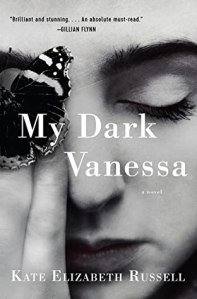 My Dark Vanessa by Kate Elizabeth Russell
My Dark Vanessa by Kate Elizabeth Russell
William Morrow, March 2020. 373 pg.
A 42-year-old English teacher at a prep school in Maine grooms then rapes his 15-year-old student. Although it’s a story that ‘s been told numerous times, it’s a remarkably strong perspective that’s completely engrossing. The story alternates between 2000 and 2017 where adult Vanessa finds herself finally recognizing the level of abuse and how it’s affected her. I have a memory from high school of being in gym class and one of my classmates going up to a (very attractive) teacher and unbuttoning a button on his shirt and commenting something about the full buttoned up style. It was so bold. That was how this popular student commanded attention. I didn’t even kiss a boy until college. Vanessa is incredibly naïve as a student: “It wasn’t about how young I was, not for him. Above everything else, he loved my mind. He said I had genius-level emotional intelligence and that I wrote like a prodigy, that he could talk to me, confide in me. Lurking deep within me, he said, was a dark romanticism, the same kind he saw within himself. No one had ever understood that dark part of him until I came along.” Vanessa writes poetry. Mr.. Strane gives her Sylvia Plath, Emily Dickinson, Edna St. Vincent Millay to read and then he gives her Lolita. As an adult, Vanessa recognizes: “I still feel different from others, dark and deeply bad, same as I did at fifteen, but I’ve tried to gain a better understanding of the reasons. I”ve become an expert on the age-gap trope, consuming books, films, anything featuring a romance between an adult and legal child. I search endlessly for myself but never find anything truly accurate.” She’s also finding it difficult to have relationships with me. She notes: “There are men who never turn into boyfriends, who peer behind the curtain and see the mess of me–literal and figurative: the apartment with a narrow path through the clothes and trash leading from bed to bathroom; the drinking, endless drinking; the blackout sex and nightmares.”
 Afterlife by Julia Alvarez
Afterlife by Julia Alvarez
Algonquin, April 2020. 256 pg.
Antonia is a recently widowed, retired English teacher who lives in Vermont. One night she arrives home to find an undocumented pregnant teenager on her doorstep. Then, her sister, who suffers with Bipolar disorder, goes missing. “You’re the most American of us, her sisters have commented to Antonia in an accusatory tone. Just saying, they said smugly when she asked what was wrong with being whoever she was. Admittedly, she was the worrier, the insomniac, the most anxious and disciplined of the sisters.” Through gorgeous prose and astute observations, Julia Avarez examines a woman’s struggles to maintain her individual identity as well as to navigate relationships with her three sisters and her immigrant community.
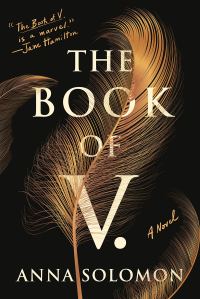 The Book of V by Anna Solomon
The Book of V by Anna Solomon
Henry Holt & Company, May 2020, 320 pg.
I gasped excitedly when I walked into the break room at my bookstore job and saw the ARC of this novel. I tore through this book in two days. Leaving Lucy Pear is one of my favorite novels and now after reading this I’ll count Anna Solomon as a favorite author. This novel focuses on three Jewish women– Lily is a mother, second wife and writer in 2016. Vivian is a political wife during the Watergate-era. Esther is an independent woman in ancient Persia. They’re all strong, independent-minded women. and Solomon fully explores each character’s motivations, desires, needs, struggles, commonalities and connections across the centuries.
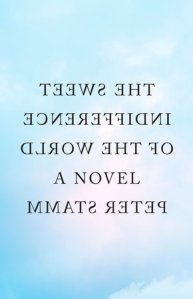 The Sweet Indifference of the World by Peter Stamm
The Sweet Indifference of the World by Peter Stamm
Other Press, January 2020. 160 pg.
I only read one book by a white male author and this is it. I have a handful of favorite cis white male authors and Peter Stamm counts as one of them. I read them immediately. I appreciate his gorgeous, melancholy writing. This one is short and interesting– a writer, Christoph, meets a woman, Lena, who is the doppelganger of his former lover, Magdalena, who inspired his first novel post breakup. Lena recognizes her own relationship with a writer named Chris in the story she’s told. This one blurs past and present, fiction and reality. How much does reality influence fiction and fiction influence reality? He comments: “With youthful pathos, I had believed I had to decide between her and my writing, between freedom and love. Only now did I understand that love and freedom were not mutually exclusive, but mutually entailed: the one wasn’t possible without the other.”
BOOK REVIEW: Perfect Tunes
Posted by Amy Steele in Books on November 23, 2020
 Perfect Tunes by Emily Gould. Avid Reader Press| April 2020| 272 pages| $26.00| ISBN: 978-1-5011-9749-9
Perfect Tunes by Emily Gould. Avid Reader Press| April 2020| 272 pages| $26.00| ISBN: 978-1-5011-9749-9
RATING: 3.5 /5*
Laura, an aspiring singer/songwriter from Ohio, moves to New York to share an apartment with Callie, her best friend from high school. Despite her plans to avoid dating, Laura ends up falling in love with the bass player in an up-and-coming band. Turns out she’s more into him than he is with her: “Laura fought back the urge, again, to tell him that she loved him, to claim him officially somehow. The thought of him with random girls in different cities made her want to peel off her skin. She wished that they were married. She wanted everyone he met to know they were together. There was no possible way to express any of this to him.” It turns out that Laura wants to be independent and successful on her own merits but also wants to be in a relationship. Which, of course, is possible. It just isn’t possible with this guy. She’s a people pleaser and I almost cringed at the part where she’s over there cooking dinner for Dylan and his roommate/bandmate. I had a crush on a guy in a band one time and would walk his dog for him several times a week thinking that would make him more interested in me. Foolishness that I can’t say I didn’t repeat.
Dylan enjoys the attention and frenetic lifestyle associated with being in a band and touring. Laura and Callie form a band that opens for Dylan’s band and has some potential due to Laura’s songwriting prowess. Dylan’s a troubled soul struggling with a mood disorder and addiction. Sadly relatable: “He was swaying and slurring as he said this. Laura understood, without wanting to, that Dylan was much more interested in getting fucked up than he was in having sex with her.” The short-lived romance ends in tragedy and a life-changing pregnancy for Laura. She ultimately chooses her daughter over her career and her friend Callie ends up with a successful music career; maybe the one that Laura initially wanted.
Divided into three parts, the novel focuses on Laura’s early years in New York, Laura being a young mother and then on Laura’s teenage daughter Marie and her desire to learn about her biological father. As I’ve worked in the music business and have followed bands and dated musicians and experienced unrequited love (too often), I could completely relate to Laura’s early experiences in New York. I lost a bit of interest in the motherhood part. I wanted more details and focus on Laura’s songwriting. The title suggested as much and I expected more. Despite its pivot from singer/songwriter to motherhood, it’s a mostly enjoyable, quick read. Although I was disappointed, I still kept reading which attests to Emily Gould’s writing talents. I’ll try another one of her novels.
book review: With or Without You
Posted by Amy Steele in Books on August 19, 2020
With or Without You by Caroline Leavitt. Algonquin| August 4, 2020| 288 pages | $26.95| ISBN: 9781616207793
RATING: ****/5*
The way you expect your life to be isn’t often the way it ends up being. Societal pressures and outside influences affect decision-making. People change over time and sometimes love relationships don’t work anymore or just don’t fit. Why do some people languish in relationships that aren’t particularly satisfying anymore? When do you just let go of a relationship, even if you’ve been in it for a substantial amount of time?
Stella and Simon, both 42, live in New York, have been together for 20 years and don’t have any children. An RN, Stella wants a stability and a family. Simon, a musician, still dreams of success and fame in the music industry. Stella and Simon have different personalities and demeanors. Stella is strong, independent, organized, goal-oriented. Simon is laid back and not super responsible. He lives the musician lifestyle— he’s laid back and frequently takes drugs.
“She had given up things for him before. After their first year together, she’d left her job as an RN because it was so exciting to travel with him. And then being on the road got old, or maybe just she did. But by the end of her second year touring with him, she began to feel the need to be a nurse again. It was like a physical pull. She missed having a community of doctors, nurses, and staff that she saw every day.”
It had almost been out of character for Stella to fall in love with Simon— “He came over to see her the next night, and the next, and suddenly there she was, responsible Stella with both feet firmly planted, Stella who never missed a shift, who read books and adored classical music, falling heedlessly for a rocker with an impulsive lifestyle and a way with words, simply because he cared so much about her, Iike no one ever had before.”
As someone who has tried to make relationships work with people who don’t have the same values as me or who don’t have a compatible personality or aren’t going to learn and grow over the years, I found myself deeply connected with this novel. As a music journalist I’ve had many encounters with musicians. I understand the charisma and the draw involved. Someone you might not look at on the street becomes 10x more attractive on stage playing an instrument and/or singing. As a middle-aged woman, I completely comprehend wondering how time flew by and why aren’t I more fulfilled in my life?
On the eve of the start a tour that he hopes will catapult his stagnant music career, Simon convinces Stella to take drugs with him and she falls into a coma for two months. Simon can’t make it out on tour and his band mates find a replacement. He doesn’t know what to do with himself now that he’s no longer in a band. The coma completely transforms Stella. She’s now an artist with a remarkable ability to draw portraits in which she’s able to capture a person’s innermost desires and feelings. While Stella was in the coma, Simon got close to Stella’s best friend. Do Stella and Simon choose loyalty or independence?
At turns melancholy, amusing, relatable and infuriating, With or Without You is a thoughtful novel about choices, identity, self-worth in relationships and careers and remaining true to yourself. It’s about questioning everything that makes you happy and what you should do vs. what truly fulfills you. It’s a complex and unique read.
book review: The Sea of Lost Girls
Posted by Amy Steele in Books on May 2, 2020
The Sea of Lost Girls by Carol Goodman. William Morrow| March 3, 2020| 304 pages | $16.99| ISBN: 9780062852021
RATING: ****/5*
“For all the town’s fascination with its dark history–the Indian massacres and early colony, the influenza epidemic and lost girls– those stores are meant to be part of the past, told on candlelit ghost tours or sold in glossy paperbacks to be read on rainy weekends the lost girls aren’t meant to come back.
But here I am.”
I tore through this mystery/thriller!
Tess teaches at Haywood Academy, a boarding school in Vermont, and her husband, Harmon, is head of the history department. Her 17-year-old son, Rudy, struggles with dark moods and anger. He doesn’t know much about his birth father. His mother wont reveal all that much about him.
Tess got pregnant when she herself was a student at Haywood. One night, Rudy’s girlfriend, Lila, is found dead on the beach. Was it an accident or murder? Did Rudy kill her? Turns out Lila was writing a paper about a missing girl from many decades ago and her connection to Haywood. Is history repeating?
Family secrets get exposed and there are multiple suspects in Lila’s death. Haywood school has a long entrenched history of unsolved cases involving missing girls. The novel revolves around the standard trope of a teacher-student relationship with numerous twists that I definitely didn’t see coming.
I really like school settings, particularly private schools. Privilege, power, youthful insecurities, New England myths and legends, local townspeople provide plenty of drama.
Has anyone heard of the Bennington Triangle? That served as inspiration for author Carol Goodman. I don’t listen to true crime podcasts so I hadn’t heard of it even though I live in Massachusetts and spent many family vacations in Vermont in my youth. I’m now going to find a podcast!
–review by Amy Steele
I received a review copy from William Morrow.
book review: Agnes
Posted by Amy Steele in Books on November 4, 2019
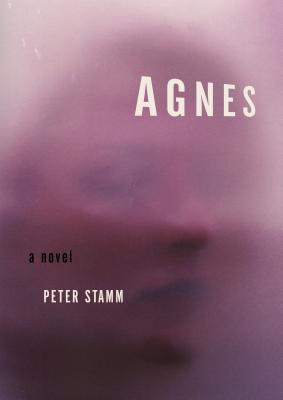 Agnes by Peter Stamm. Other Press| September 2019| 160 pages | $14.99| ISBN: 9781590511534
Agnes by Peter Stamm. Other Press| September 2019| 160 pages | $14.99| ISBN: 9781590511534
RATING: ****/5*
Agnes is the story of a romance. A writer writes the story of his relationship with Agnes, a PhD candidate. It becomes unclear what’s real and what’s fiction. Life completely imitates art. He writes: “In my head, our relationship was already much further advanced than it was in reality. I was already wondering about her, beginning to have my doubts, though we hadn’t even been out together.” Soon enough his writing changes the relationship as Agnes follows in the footsteps of her fictional counterpart. The author crafts exactly what he wants to happen. It’s the power of the pen in full. If he wanted her to dress a certain way for an upcoming event, he’d write about it.
He writes: “Now Agnes was my creation. I felt the new freedom lend wings to my imagination. I planned her future for her, the way a father would plan his daughter’s.” Do they really care about each other or is this writing now solely interested in writing the perfect character and story? Writers possess the power to change circumstances and create narratives. The writer begins to become more focused on writing about the relationship than actually being in the relationship. He writes: “I wasn’t daydreaming. I was fully in control, and everything I thought to myself instantly became real. It was a feeling like walking along a narrow gorge that I couldn’t leave. And if I tried to, I felt a kind of resistance, the presence of another will, some sort of elastic fetters that kept me from setting off in the wrong direction.” It’s an intriguing concept and beautifully written in this short, strong novel.
review by Amy Steele
book review: We Are the Weather
Posted by Amy Steele in Books on October 11, 2019
We Are the Weather by Jonathan Safran Foer. FSG| September 2019| 272 pages | $25.00| ISBN: 978-0-374-28000-0
RATING: ***/5*
“The truth is I don’t care about the planetary crisis—not at the level of belief. I make efforts to overcome my emotional limits: I read the reports, watch the documentaries, attend the marches. But my limits don’t budge. If it sounds like I’m protesting too much or being too critical—how could someone claim indifference to the subject of his own book? —it’s because you also have overestimated your commitment while underestimating what is required.”
Okay so two things: I have been a vegan for 15 years and was vegetarian for at least a decade prior to that; I am a fan of Jonathan Safran Foer. Eating Animals and Here I Am are favorites of mine. I always recommend Eating Animals to people. And it’s not that I wouldn’t recommend We Are the Weather but I just didn’t like it that much. I wasn’t impressed. It’s a self-exploration of why Foer isn’t doing more or caring more. This is the book someone writes to appease guilt. It’s an existential search for why he cannot sustain a vegan diet and lifestyle. It’s well-written and researched–the book provides plenty of facts to back up the thesis that factory farming affects climate change. Foer writes: “Climate change is the greatest crisis humankind has ever faced, and it is a crisis that will always be simultaneously addressed together and faced alone. We cannot keep the kinds of meals we have known and also keep the planet we have known. We must either let some eating habits go or let the planet go. It is that straightforward, that fraught.” This book didn’t move me as much as Eating Animals moved me.
Utilizing family history, notable the Holocaust and WWII, Foer states the importance of decreasing meat consumption for the common good. Foer notes: “Ninety-six percent of American families gather for a Thanksgiving meal. That is higher than the percentage of Americans who brush their teeth every day, have read a book in the last year, or have ever left the state in which they were born. It is almost certainly the broadest collective action—the largest wave—in which Americans partake.”
I understand something is better than nothing and I’d like everyone to reduce meat, dairy, poultry and fish consumption. As someone who is first and foremost vegan for the animals, I can’t relate to the sentiment that it’s okay to sometimes eat fish or meat or sometimes have dairy ice cream if someone says they’re vegan. It isn’t a “cheat” diet. There are dire consequences. Foer writes: “According to Project Drawdown, four of the most effective strategies for mitigating global warming are reducing food waste, educating girls, providing family planning and reproductive healthcare, and collectively shifting to a plant-rich diet.”
Most people remain ignorant to the impact of their diets. They’re not morally opposed to consuming animal products. They also don’t think that an individual’s choices will affect the greater good. They’re wrong. He states: “When I first chose to become vegetarian, as a nine-year-old, my motivation was simple: do not hurt animals. Over the years, my motivations changed—because the available information changed, but more importantly, because my life changed. As I imagine the case for most people, aging has proliferated my identities. Time softens ethical binaries and fosters a greater appreciation of what might be called the messiness of life.” He makes these types of statements but by the end of the book I still don’t understand these other motivations and why it’s so hard for Foer not to be 100% vegan. If you want to be vegetarian or omnivore then that’s your choice. It’s not, however, difficult to commit to being vegan if you’re in it for the right reasons. And if you’re committed to helping the environment, then it’s critical that you make changes in your diet.
Here’s some notable facts from the book:
–“There have been five mass extinctions. All but the one that killed the dinosaurs were caused by climate change.”
–“Since the advent of agriculture, approximately twelve thousand years ago, humans have destroyed 83 percent of all wild mammals and half of all plants.”
–“Sixty percent of all mammals on Earth are animals raised for food.”
–“There are approximately thirty farmed animals for every human on the planet.”
–“In 2018, more than 99 percent of the animals eaten in America were raised on factory farms.”
–“Humans eat sixty-five billion chickens per year.”
–“On average, Americans consume twice the recommended intake of protein.”
–“The four highest-impact things an individual can do to tackle climate change are eat a plant-based diet, avoid air travel, live car-free, and have fewer children.”
–review by Amy Steele
FTC Disclosure: I received this book for review from Farrar Straus Giroux.
book review: No Judgments
Posted by Amy Steele in Books on October 2, 2019
 No Judgments by Meg Cabot. William Morrow| September 24, 2019| 358 pages | $15.99| ISBN: 978-0-06-289004-7
No Judgments by Meg Cabot. William Morrow| September 24, 2019| 358 pages | $15.99| ISBN: 978-0-06-289004-7
RATING: ***/5*
Oops! I did it again. I read another contemporary romance. These keep getting sent to me even though I have repeatedly stated that my reading interests primarily lie in historical fiction, memoir, contemporary literature, literary fiction and feminist books. I know that these are popular books and I’m often sucked in by the cover and descriptions. It’s definitely a good way to break up my reading. After a challenging book, I often want a palate cleanser such as YA or thriller or romance.
So let’s look at this novel and why I chose it. First the cover attracted me– a fun picture of a couple kissing under an umbrella with a dog and a bright color palette with pink and blue. Next, is the author–I’ve read at least one novel by Meg Cabot in the past. She writes both contemporary adult fiction and YA. She wrote the popular The Princess Diaries. Finally the description sounded great. Hurricane season seemed the perfect time to read a novel about a hurricane in a gorgeous island setting. Plus there’s animal rescue? I’m in!
Bree Beckham left Manhattan for Little Bridge, a small island in the Florida Keys, where her family vacationed. Bree’s mother is a millionaire and famous radio personality known as Judge Justine. She’s working as a waitress and trying to figure out next steps as a category 5 hurricane barrels toward the island. Most people leave but Bree stubbornly decides to stay with her rescue cat. Her boss’s wife invites her to stay at their more Hurricane-proof home. She takes them up on the offer. After the hurricane, she starts rescuing and helping pets left behind and her boss’s nephew Drew offers to help her out. They of course start to fall for each other. I found Bree’s story to be relatable. She was working in a field she didn’t quite like and she’d left a terrible relationship behind in New York. Her intelligence and strength carry the novel. That and her flirty banter with Drew. Their relationship starts in Moonlighting style. Do they like each other or don’t they? Little Bridge is the true star though. This is Cabot’s love letter to the Florida Keys. She creates a strong sense of place throughout this novel. Although it’s predictable, it’s a sweet little romance novel sure to allow readers a bit of escape. It’s the first in the Little Bridge series, of course, as the most popular novels tend to be.
Cabot was inspired by the true-life story of Brittany Davis who rescued pets in need during Hurricane Irma. Cabot herself decide to stay at her Key West home during the storm that hit the Florida Keys in 2017. Cabot had a landline and soon her home became a hub for locals who wanted to connect with the outside world after the power went out.
–review by Amy Steele
I received this book for review from William Morrow.
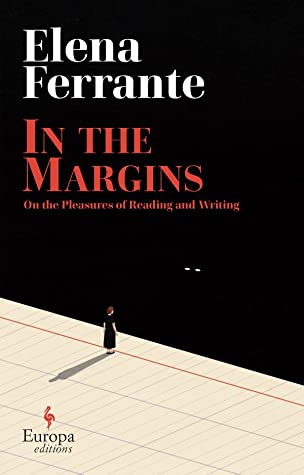


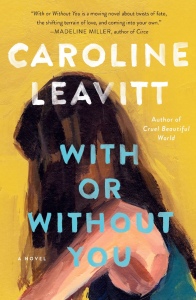
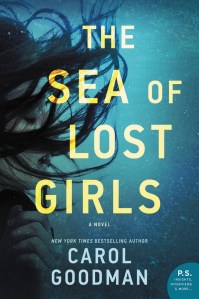








You must be logged in to post a comment.